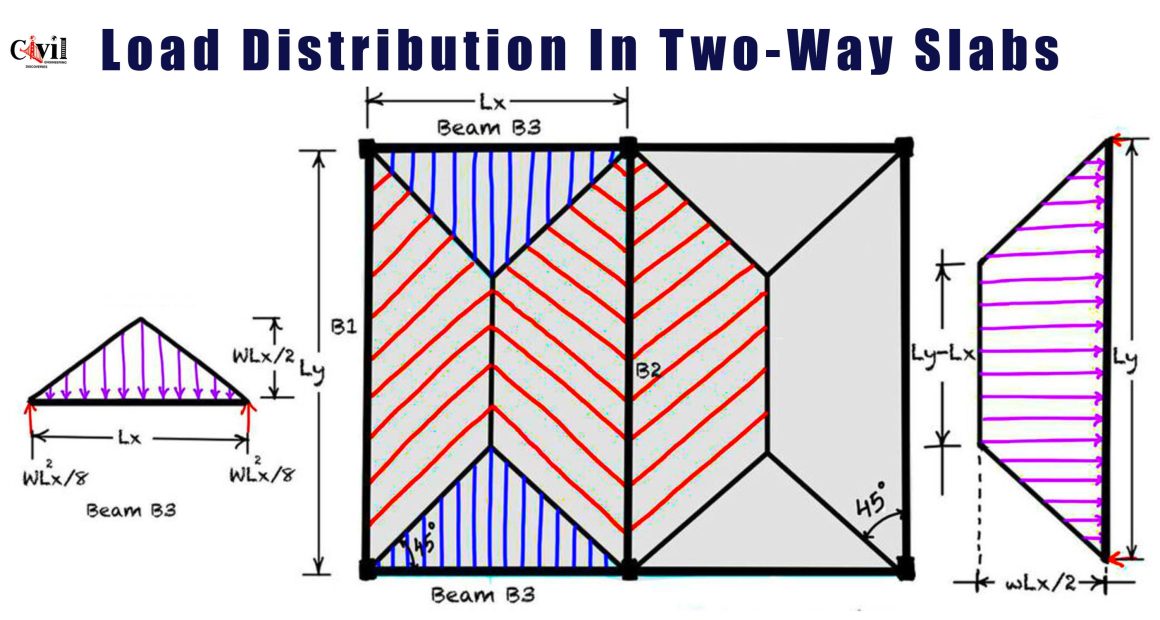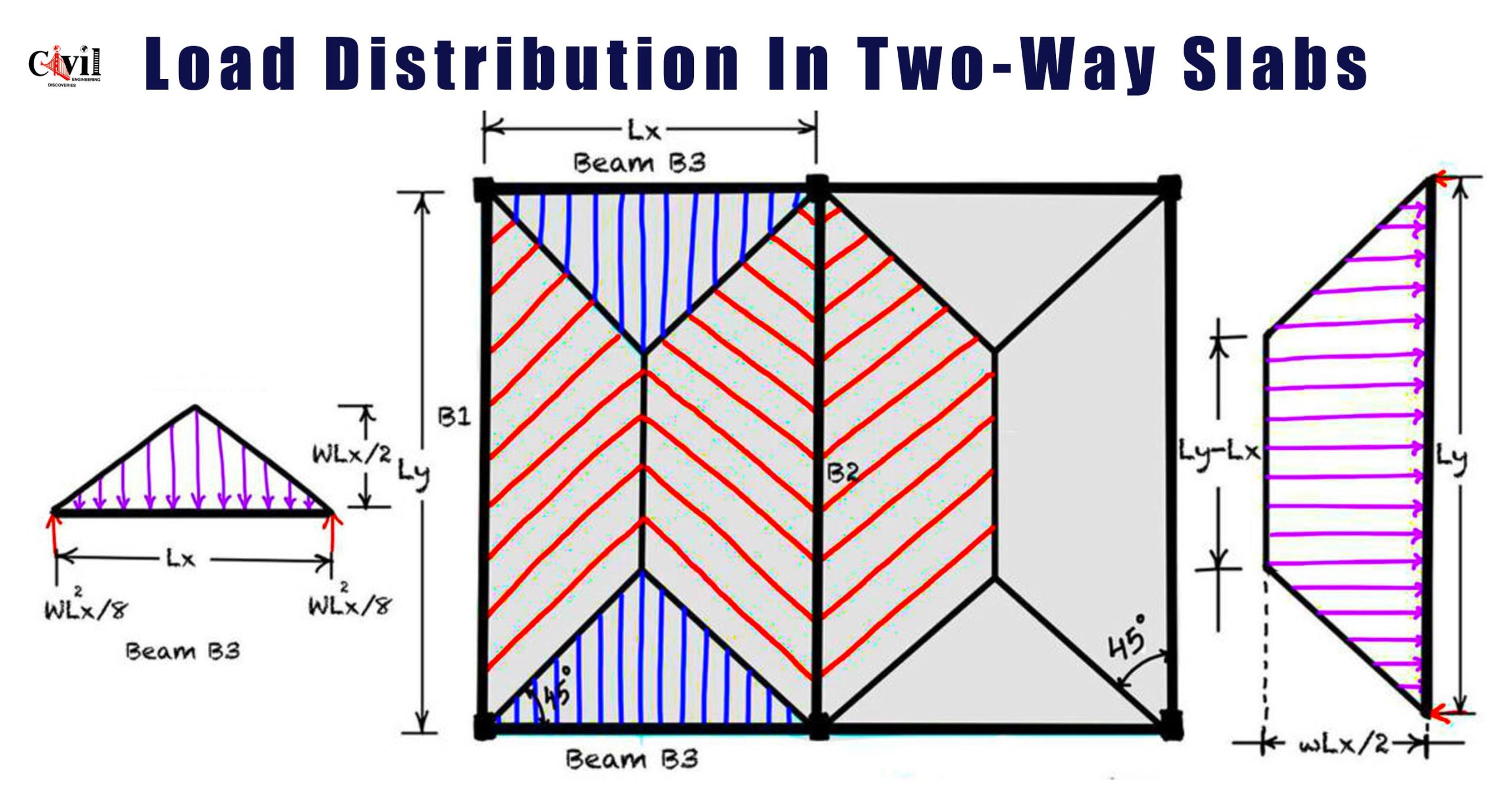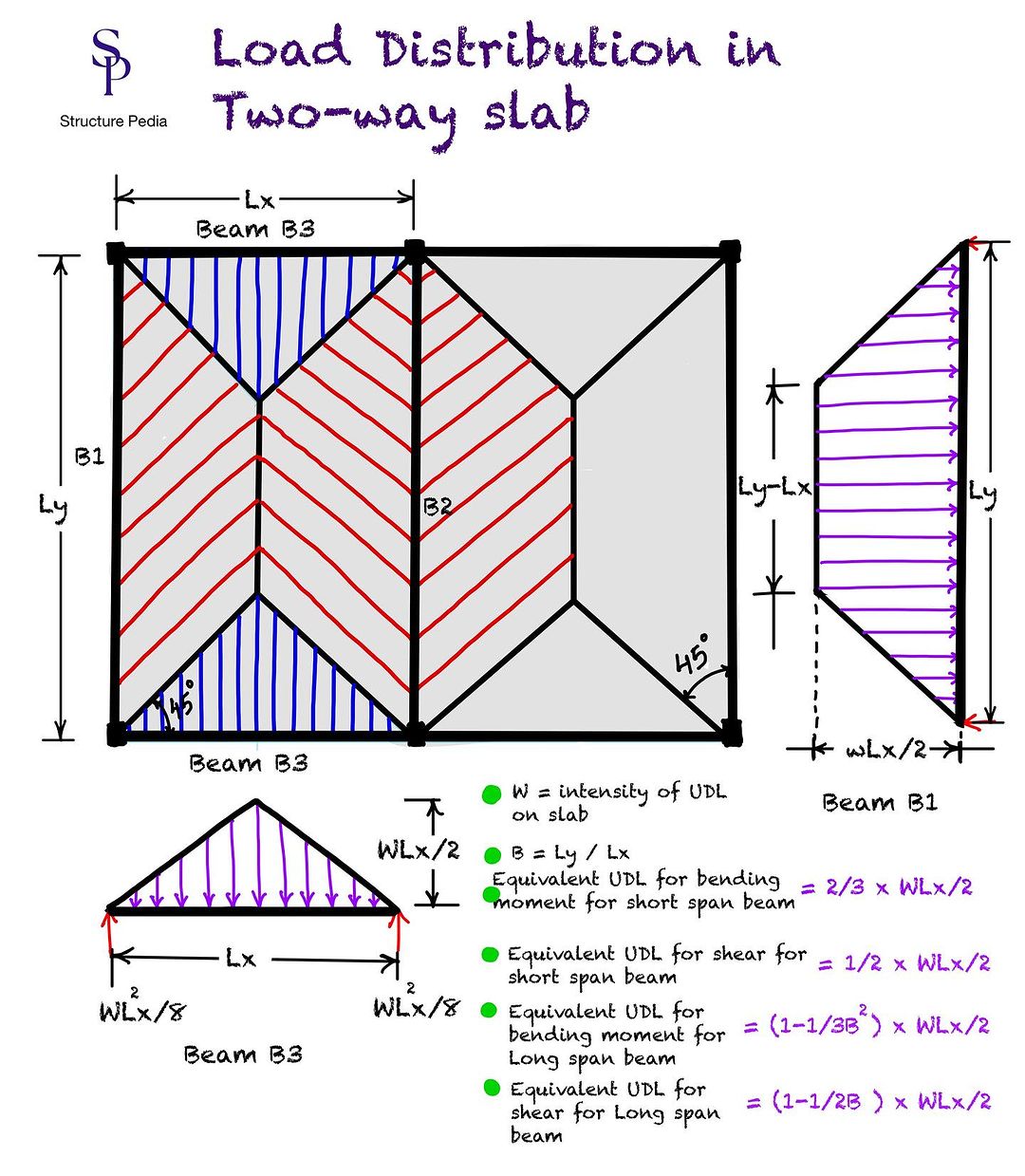In structural engineering, the design of slab systems is crucial for ensuring a building’s structural integrity. Two-way slabs are widely used in building construction as they efficiently distribute loads over multiple beams in two perpendicular directions. This article breaks down the fundamentals of load distribution in two-way slabs and explains the notations and calculations essential for understanding this structural element.
What is a Two-Way Slab?
A two-way slab is a flat slab supported on all four sides, distributing loads to beams in longitudinal (x) and transverse (y) directions. Unlike one-way slabs, which only transfer load in one direction, two-way slabs share loads between beams in both directions, leading to efficient load transfer and reduced bending moments.
Key Parameters and Notations
- UDL (Uniformly Distributed Load) Intensity W:
- Represents the uniform load applied over the slab area, distributed to the supporting beams.
- Beam Designations:
- Beam B1 and B2: The beam along the longer span .
- Beam B3: The beams along the shorter span .
- Aspect Ratio (B):
- This ratio determines how the load is divided between the long and short-span beams. A slab with a high aspect ratio behaves more like a one-way slab.
Load Distribution Theory
In a two-way slab, load distribution to the beams is based on the aspect ratio B and geometric orientation. Loads are split between beams using geometric triangles or trapezoids, which form angles of 45° in the slab’s corners.
Load Sharing Calculations for Short and Long Spans
- Short Span Beam (Lx):
- Equivalent UDL for Bending Moment: = 2/3 (WLx/2)
- Equivalent UDL for Shear: 1/2 (WLx/2)
- Long Span Beam (Ly):
- Equivalent UDL for Bending Moment: (1 – 1/3B²) x (WLx/2)
- Equivalent UDL for Shear: (1-1/2B) x (WLx/2)
Interpreting the Load Distribution DiagramThe load distribution pattern in the diagram shows:
- The blue-striped regions indicate areas where loads are primarily distributed to short-span beams.
- The red-striped regions represent load distribution towards long-span beams.
- The triangular and trapezoidal load sections at each end of the slab are formed to reflect the 45° load distribution angle, which aids in equal load sharing between spans.
Each beam section takes a portion of the load based on the geometry of these zones, where the intensity of the UDL on the beams varies as calculated above.
Design Considerations for Two-Way Slabs
In practice, engineers consider the following factors when designing two-way slabs:
- Aspect Ratio (B): Determines if the slab is more like a one-way or two-way slab, influencing load distribution and deflection.
- Load Intensity (W): Higher loads demand larger beams or additional reinforcement to handle increased shear and bending moments.
- Support Conditions: For slabs with different boundary conditions (simply supported, continuous, or fixed), adjustments to load distribution factors are necessary.
Click Here To See Main Reinforcement In Stair Design: Key Techniques For Stability And Strength
Photo Credit: Structure Pedia







